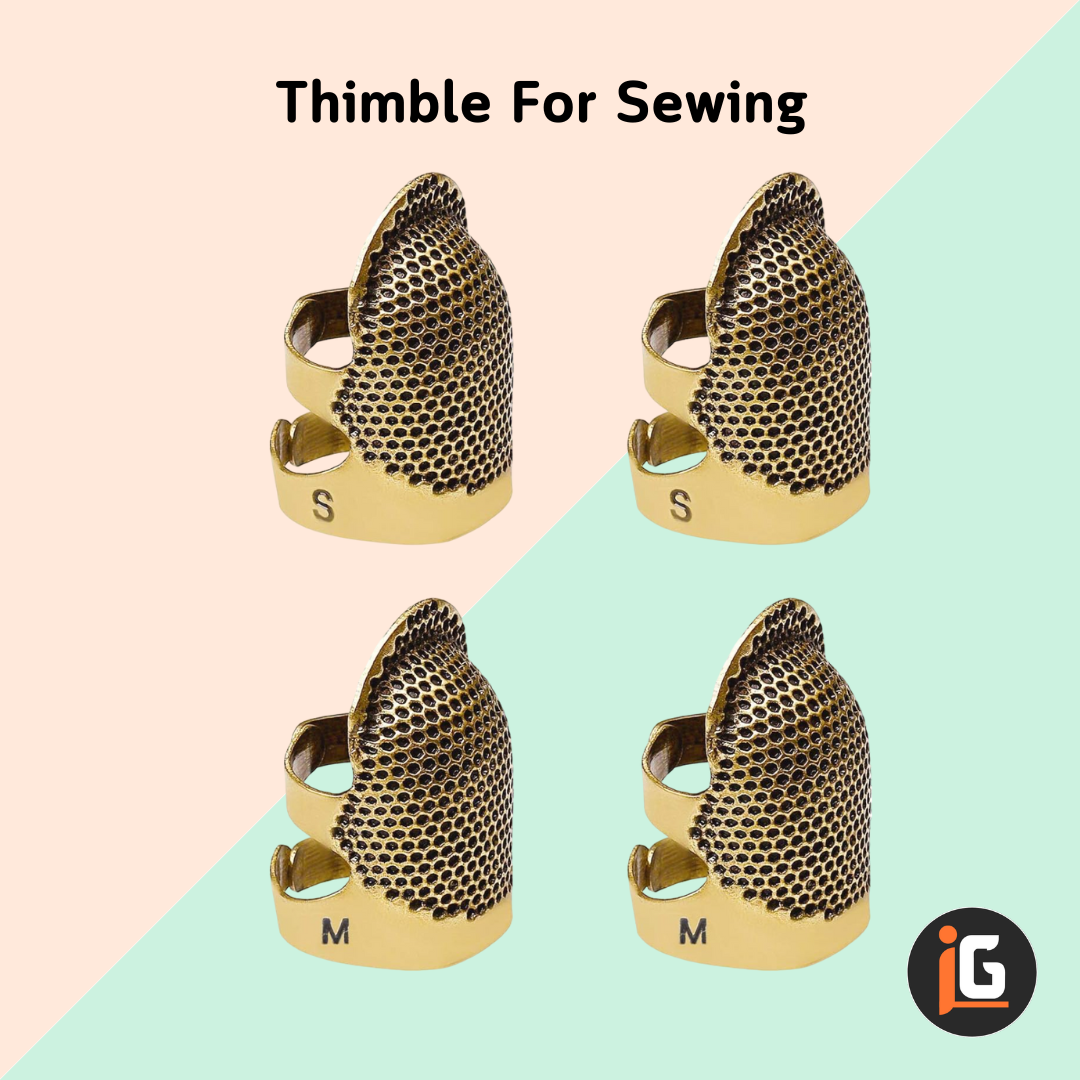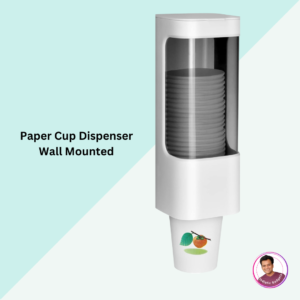Link for India.
Link for other Countries.
Sewing is a rewarding and creative activity, but it can also be a bit tricky, especially when working with thick fabrics or intricate designs. One of the most useful tools every sewer or crafter should have is a Thimble for Sewing. This small yet mighty accessory protects your fingers from needle pricks, improves stitching precision, and allows for longer, more comfortable sewing sessions.
Table of Contents
ToggleIn this article, we’ll explore the key features, benefits, and everything you need to know about the Thimble for Sewing, so you can decide if it’s the right addition to your sewing toolkit.
What is a Thimble for Sewing?
A Thimble for Sewing is a small, protective cap worn over the fingertip while sewing. Traditionally made from metal, plastic, or rubber, thimbles help prevent finger injuries, especially when pushing a needle through thick fabric. They are designed to fit comfortably on your finger while offering enough rigidity to protect your skin without limiting movement.
While thimbles are often used for hand-sewing, they can also be beneficial for quilting, embroidery, and other crafts that require precision stitching. By protecting your fingers from painful needle pricks, a thimble can significantly improve the sewing experience.
Key Features of the Thimble for Sewing
Finger Protection
The primary function of the thimble is to protect your fingers from needle pricks, which can be painful and even lead to injury with repetitive use. It covers the fingertip, offering a shield against sharp needles and allowing you to push the needle with more force and confidence.Comfortable Fit
Thimbles come in various sizes to ensure a comfortable fit for different fingers. Some models are adjustable, ensuring that they provide a snug yet comfortable fit, preventing any slipping or discomfort while sewing.Durable Materials
Thimbles are made from durable materials like metal, plastic, or silicone. Metal thimbles are known for their sturdiness and long lifespan, while plastic and silicone thimbles offer flexibility and comfort. The material you choose depends on your personal preference and the type of sewing you do.Ventilated Design
Many modern thimbles feature small holes or a perforated design, allowing air circulation to keep your finger cool and comfortable during long sewing sessions.Precision and Control
By using a thimble, you gain more control over your needle, which is particularly useful when working with thick fabrics or multiple layers. It helps you apply more force without risking injury, giving you better precision and speed while sewing.Versatility
While designed for sewing, thimbles are also useful for other crafts, such as quilting, embroidery, and even gardening or handling delicate materials.
Pros of the Thimble for Sewing
- Prevents Needle Injuries: Protects your fingers from painful pricks while sewing, especially when using thick needles or fabrics.
- Comfortable Fit: Available in various sizes and adjustable options, ensuring a secure and comfortable fit for your finger.
- Improved Control: Provides better control and force when pushing needles through fabric, improving stitching accuracy.
- Durable: Made from high-quality materials like metal or plastic, ensuring long-lasting use for many sewing projects.
- Versatile: Useful not only for sewing but also for quilting, embroidery, and other crafts.
- Easy to Use: Simply slip it on your finger, and you’re ready to sew without worrying about painful finger pricks.
Cons of the Thimble for Sewing
- May Take Time to Adjust: Some beginners may find it difficult to get used to wearing a thimble, especially if they’re new to sewing.
- Limited to Finger Protection: While it protects your fingers, a thimble doesn’t provide protection for other parts of your hand, such as the palm.
- Might Be Uncomfortable for Extended Use: If the thimble is not the right size or is made from a less flexible material, it can become uncomfortable during long sewing sessions.
- Not Ideal for All Types of Sewing: Some types of hand sewing may not require a thimble, especially if the fabric is lightweight or if a machine is being used.
FAQs About the Thimble for Sewing
1. How do I know which size thimble to choose?
Thimbles come in various sizes. To determine your size, measure the circumference of your fingertip and choose a thimble that fits snugly without being too tight or loose. Some thimbles are adjustable, making them easier to fit to different finger sizes.
2. Can I use a thimble for machine sewing?
While a thimble is generally used for hand-sewing, some people use them while hand-finishing machine-sewn seams or for tasks like quilting by hand. However, for regular machine sewing, a thimble is not typically necessary.
3. How do I clean my thimble?
Cleaning a thimble depends on its material. Metal thimbles can be wiped with a soft cloth, while silicone or plastic thimbles can be washed with mild soap and water. Avoid harsh chemicals that could damage the material.
4. Can a thimble be used for other crafts besides sewing?
Yes, thimbles are versatile tools that can be used for quilting, embroidery, and even gardening. They are also helpful for handling delicate materials, such as when working with paper or handling small items that require precise handling.
5. Are there any thimbles for left-handed people?
Most thimbles are designed to be unisex and can be used by both right- and left-handed people. However, left-handed users may prefer thimbles that fit their dominant hand more comfortably.
Conclusion
The Thimble for Sewing is an essential tool for anyone who enjoys sewing, quilting, or embroidery. It offers vital finger protection, allowing for longer and more comfortable sewing sessions, while improving control and precision. Whether you’re a beginner or an experienced sewer, using a thimble can make your projects more enjoyable and efficient, preventing unnecessary finger injuries and improving the quality of your work.
If you’re looking for a simple, affordable, and effective way to enhance your sewing experience, a thimble is an indispensable tool that should be in your sewing kit.





